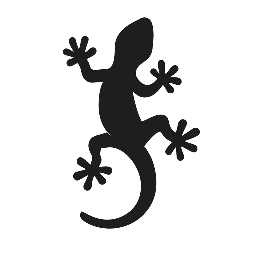One of the most common questions new bearded dragon owners ask is, “How often should I be feeding my pet?” It’s a fantastic question because the answer is not one-size-fits-all. A baby dragon’s dietary needs are vastly different from a full-grown adult’s. Understanding the right feeding schedule for your dragon’s age is essential for their growth, health, and overall happiness.
Feeding them too little can stunt their growth, while feeding them too much, especially as adults, can lead to obesity and other health problems. Let’s break down the ideal feeding frequency for each stage of your bearded dragon’s life.
The Voracious Eater: Baby Bearded Dragons (0-4 Months)
A baby bearded dragon is a tiny, fast-growing machine. To fuel their explosive growth, they need a diet packed with protein. This is the most intensive feeding stage of their life.
- Feeding Frequency: Baby bearded dragons should be offered food 3 to 5 times per day.
- Diet Composition: Their diet should be about 80% insects and 20% plants.
- How to Feed: Each feeding session should last about 10-15 minutes. In that time, let them eat as many appropriately-sized insects (no larger than the space between their eyes) as they want. Once the time is up, remove any uneaten insects from the enclosure.
- Don’t Forget the Veggies: Even though they’ll favor insects, it’s crucial to offer a small, finely chopped salad of staple greens (like collard or mustard greens) every morning. This gets them accustomed to eating vegetables from a young age.
The Growing Teen: Juvenile Bearded Dragons (5-18 Months)
As your dragon transitions from a tiny baby to a lanky adolescent, their growth rate begins to slow down, and so does their metabolism. Their feeding schedule and dietary composition will start to shift.
- Feeding Frequency: You can reduce insect feedings to 1 to 2 times per day.
- Diet Composition: The ratio of insects to plants starts to balance out. Aim for a diet of about 50-60% insects and 40-50% plants.
- How to Feed: Continue with the 10-15 minute rule for insect feedings. Their daily salad should become a more significant part of their meal, so make sure a fresh one is always available. You’ll notice them showing much more interest in their greens during this stage.
The Laid-Back Lounger: Adult Bearded Dragons (18+ Months)
Once your bearded dragon reaches adulthood, their growth stops. Their primary dietary need shifts from fueling growth to maintaining a healthy body condition. This is where the diet flips from being protein-dominant to plant-dominant. Overfeeding insects to an adult is a common mistake that can lead to obesity.
- Feeding Frequency: Insect feedings should be drastically reduced to once every other day, or just 3-4 times a week. A fresh, large salad, however, should be provided every day.
- Diet Composition: The ideal adult diet is 70-80% plants and 20-30% insects.
- How to Feed: Offer a large bowl of varied, staple greens and chopped vegetables every morning. On insect days, offer a small number of insects (e.g., 5-10 dubia roaches) as a protein supplement to their main salad meal.
Quick Reference: Feeding Schedule Chart
| Age Group | Feeding Frequency (Insects) | Diet Ratio (Plants/Insects) | Supplement Schedule |
| Baby (0-4 mo) | 3-5 times per day | 20% / 80% | Calcium 5x/week, Multivitamin 2x/week |
| Juvenile (5-18 mo) | 1-2 times per day | 50% / 50% | Calcium 4x/week, Multivitamin 2x/week |
| Adult (18+ mo) | Every other day (3-4x/week) | 80% / 20% | Calcium 3x/week, Multivitamin 1x/week |
A Note on Supplements
Remember to dust your feeder insects with a high-quality calcium with D3 powder and a separate multivitamin. The frequency of dusting also changes with age. Babies need calcium dusting more often than adults to support their rapidly growing bones. Refer to the chart above for a general guideline.
By tailoring your feeding schedule to your bearded dragon’s specific life stage, you’re providing them with the building blocks they need to live a long and healthy life. Always monitor your dragon’s body condition and adjust as needed—and when in doubt, a consultation with a reptile veterinarian is always a great idea.

Leave a Reply